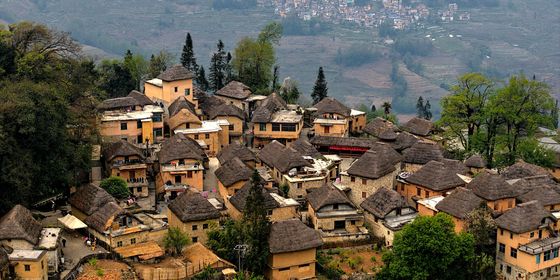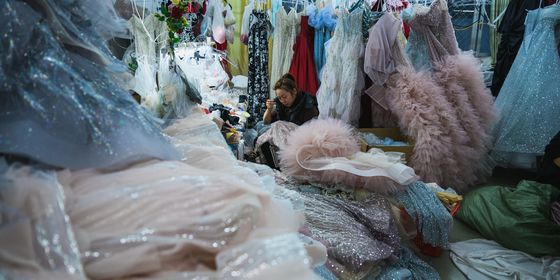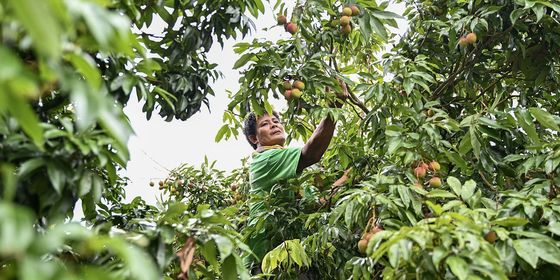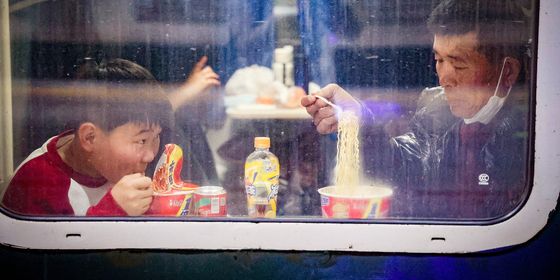The migratory patterns of the Chinese people
China is a nation transformed: urban landscapes swell to the brim with rural citizens hoping to make their fortune, the newly rich run from the chaos of the metropolitan rat race, and many of the truly wealthy look for solace outside of China’s borders. This change has had its ups and downs, but it cannot be denied that the people of China are migrating en masse and that the consequences of this mass migration are being felt everywhere—even though the true costs may not be felt for decades to come. The key revolution of China this decade has been economic, one in which a society mills freely about the nation and abroad to seek a fortune or future unthought-of in previous generations.
For China’s cities, this means a great deal, chiefly that the rural population are searching for a lifestyle and a fortune in the urban areas where the pay is better, the work safer, and the outlook brighter. The explosion of the middle class has, for some, had the opposite effect, with China’s relatively young and wealthy looking for a less hectic life in the country’s more peaceful (and possibly more lucrative) areas. Some just want to get out of China altogether, and there are options for the super rich and hopeful parents alike to getting on the fast track to a fresh, new passport from a country of their choosing; just a few decades ago, China opened up to the world, and now the world is opening up to China. Chinese society, put simply, is on the move.
Rural Exodus
It is the largest human migration China has ever experienced. The change of political climate and economic policy in the late 1980s and early 1990s opened a door to the city for hundreds of millions of rural residents. Attracted by wages several times higher than what they could earn at home, not to mention the prospect of richer urban lives and everything else cities offer, they could not wait to abandon their “mud bowl”. Firmly stationed on the assembly line, these peasants-turned workers began to create the so-called Chinese miracle, becoming the backbone of economic development, and it never seemed to stop. Over the next 30 years, the ever intensifying trend completely changed the social fabric of the nation.
By 2013, the number of rural migrant workers reached268 million, accounting for nearly one fifth of the entire Chinese population. First found in the factory workshops and construction sites, migrant workers are now employed in every aspect of city life: express delivery, retail, restaurants, hotels, and more, with some going on to become successful entrepreneurs. They are at every street corner in every city selling, repairing, and serving tirelessly. There is no doubt that rural migrant workers can better themselves by moving to the city, but like everywhere else in the world in the history of urbanization, the dramatic social change is not without its problems. Some of these factors—not least of which is the sheer scale—are unique to China.
The already heavily populated urban areas are struggling to meet the needs of the large influx of migrant workers. Beijing, for example, already holds a population of well over 21 million, of which over four million are migrant workers. With an increase of 500,000 new migrants each year, resources are running dangerously low: infrastructure is lagging behind international standards, urban planning is challenged, and quality of life is poor and worsening for many migrant workers.
However, overcrowding tops the list of problems. This February a fire broke out in a “village within the city”—rural areas that slip through the cracks of urbanization where rural residents lost their farmland due to city expansion—in Shanghai Pudong New Area, killing a20-year-old Jiangsu migrant worker and his newly-wed pregnant wife. At the time of the fire, the two-floored brick building, constructed in the 80s, was crammed with25 tenants in small rooms separated by wooden boards. Like the victims, most were migrant workers employed in the local shipyard. The village, called Shanheng, had 3,000 locals and over 10,000 migrant workers living in rooms less than 10 square meters in size. Scattered gas tanks, aging wires, and even electric bikes are a constant threat to these workers’ lives. But rent is as low as 100RMB a month—a migrant worker has to save money where he can.
Such villages are common places for migrant workers to live. In 2010, China Real Estate and Finance published a survey of 404 migrant workers based in Beijing, showing that 63 percent of them live in old bungalows and self-built simple houses in these “villages within the city”, and 72 percent of them had an average living area of less than five square meters per person. In many of these crowded and unsanitary living areas, a bathroom or even running water is a luxury. With an average monthly wage of 2,609 RMB, migrant workers only spend about450 RMB on housing in the hope of taking more money back to their families. Some have even chosen shipping containers, wells and manholes as homes.
Alongside the extremely bad living conditions, environmental pollution also poses a huge threat to the health of the migrant workers. According to “Environment, Health and Migration”, a report completed this March by the United Nations Research Institute for Social Development, migrant workers tend to live close to pollution sources in heavily industrialized areas, which are typically where they work. Migrant workers are repeatedly exposed to water, soil and air pollution, leading to deteriorating health. Also, the latest figures from the State Statistics Bureau indicate that only18 percent of migrant workers have health insurance. For most of them, their poverty leaves them entirely unequipped to deal with illness.
Their trials, however, do not end there. The hukou, or household register system, is their final obstacle in being embraced by the city, a hurdle many never overcome. Installed in 1958, hukou are divided into agriculture for rural residents and non-agriculture for urban residents, and attached are very different medical care facilities, insurance plans, and educational opportunities. Disadvantaged rural residents have a hard time meeting the ever changing urban hukou requirements, even if they have lived, worked and paid taxes in the city for decades. Faced with complaints and criticism, the Beijing city government issued urban hukou to three migrant workers at the end of April this year, all of whom were “National Labor Models”—a gesture to show that migrant workers’ contribution to the city will eventually be rewarded. However, three out of over four million is fatuoustokenism and of no comfort whatsoever to the diligent army of migrant workers living on the ramshackle edges of Beijing and other Chinese cities.
Seemingly a group of perpetual outsiders, migrant workers are all-too-often discriminated against, mistreated, and brushed aside without so much as a moment’s notice. In its rush to modernize, China has clearly created a new urban underclass. They are called nongmingong (农民工) or mingong (民工), a name that has increasingly been associated with shabby appearance, boorish manners, poor education, intense physical labor, and an impoverished status—worse still, it’s a term now snobbily used as an insult. To counter such negative connotations, the state-run media began a campaign, which was really a piecemeal effort in semantics, and added “brothers and sisters” after mingong, hoping such a gesture would bridge the gap between rural workers and the city dwellers. But, a simple name change was never going to be enough. If migrant workers are indeed our brothers and sisters, we are pretty shameful siblings.












